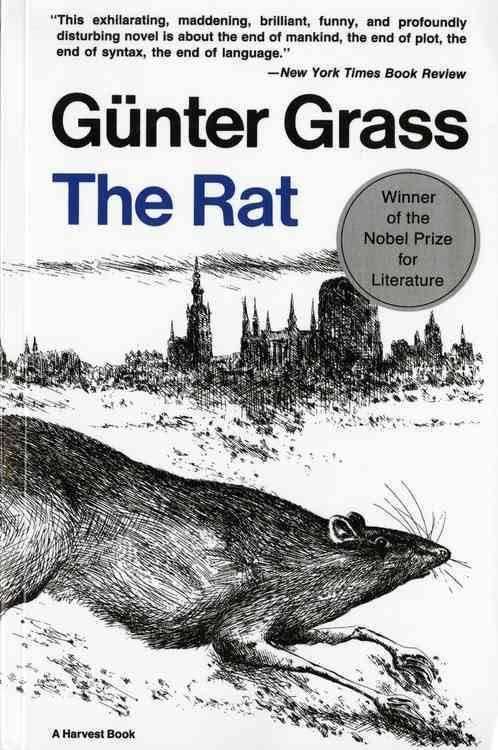Original title Die Rättin Published in English 1987 Originally published 1986 Page count 504 Published in english 1987 | Country West Germany Publication date 1986 Pages 504 | |
 | ||
Similar Günter Grass books, Other books | ||
The Rat (German: Die Rättin, literally The Ratess) is a 1986 novel by the West German writer Günter Grass.
Contents
Structure and content
The plot is composed of many narrative strands and oscillates between fairytale, travelogue and surreal novel. It also contains cinematic perspectives and some poems. Grass incorporates some narrative threads of his success novels The Tin Drum as well as the Butt; further passages on maritime disasters, the sinking of the Wilhelm Gustloff, anticipate aspects of his book Crabwalk.
Grass has conceived the novel as a counter-image to Gotthold Ephraim Lessing's picture of the education of the human race: Humanity (Grass used deliberately old-fashioned word "mankind") have indeed learned "the virtue to eat with spoons, diligently the subjunctive and practice tolerance", all enlightenment but not their tendency to get their violence under control.
In the dreams of the narrator, who seems to be in a spaceship orbiting the devastated earth, a speaking female rat compels the narrator to review the destruction of humanity, and follow their dominant position by rats. Rats build accordingly, in a world destroyed through deforestation, pollution, and nuclear warfare, a new civilization based on solidarity.
Against this vision, the narrator developed his own stories leading up to the nuclear apocalypse, partly as film scripts for the including by porn series to Medienzar Oskar Matzerath, the painter Malskat and the restoration of the 50s, from the dead forests and the dying power of Fairy Tales and five beloved women who make up the Baltic officially investigating the local jellyfish population and secretly in search of the legendary Vineta as a place of female utopia. In addition, among other things, the Smurfs are in the German forest road and the Grimm brothers take over temporarily the government.
He lived through the (alleged) downfall of mankind once again based on the fates of different people. In a final conversation between the Rats and the narrator, the foregoing is in jeopardy. The two can not agree whether the She-rat is just a dream of the narrator, or whether this is - along with the rest of humanity - merely a figment of the imagination of remaining on earth rat. The first third initially original, imaginatively laid possibilities of his polyphonic narrative concept is not further developed and used in the other part.
Parody
Entitled Günter rat: The Grass a parody appeared on the work prior to the issue of the displaced during Luchterhand publishing original and was moved by Vito of calibration fount in Eichborn Verlag. The up to the present anonymous author had obviously already before the publication date access to Grass' manuscript. Der Spiegel spoke of shells jokes that took the Social Democratic porn movie producer Mike Matzerath, who wrote the Godesberg Program under the pseudonym Willy Brandt, then wanted to film what he's failed targeted. Rebecca Braun, a German lecturer and Grass scholar at Lancaster University, according to the parody treated rather Grass' exaggerated perceived public role in political Berlin, not thought through political ideas than the individual work itself.
Reception
Janette Turner Hospital of The New York Times called the book an "exhilarating, exhausting, maddening, brilliant, funny and profoundly disturbing novel".
